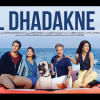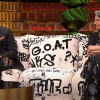Headlines vs Hemlines: The pervasive bias of entertainment journalism against women

Ryan Gosling graces a red carpet in a crisp new suit, and the next day, tabloids are bursting with heated debates about the width of his lapel. Sounds weird? For female artistes, this scenario isn't far from reality. In the realm of entertainment journalism, a woman's neckline often holds more significance than her latest award-winning performance. This unrelenting focus on the personal choices of women, from Dhaka's entertainment newsrooms to the glossy pages of Hollywood tabloids, isn't merely a journalistic whim. It's a reflection of deeply ingrained societal norms, marketing strategies, and a global patriarchal playbook that seems to transcend borders.

Prominent actress Raveena Tandon, reflecting on her days in Bollywood during the 1990s, quipped in a recent interview, "The size of my thighs, quite possibly, enjoyed more fame than my films." On the global stage, Marilyn Monroe lamented being a tabloid tale rather than a theatre toast. In today's Dhaka, rumours about emerging star Tasnia Farin's marital status became a hot topic for dailies and tabloids until she addressed and debunked them on social media. Priyanka Chopra Jonas, with a career spanning from Mumbai to Hollywood, has similarly faced personal speculation. Responding to the undue focus on the age gap in her marriage, she remarked in an Elle interview, "It's 2023. Shouldn't my achievements speak louder than my marital chronology?"

In the heart of Dhaka, Jaya Ahsan, a widely acclaimed actress, finds herself embroiled in controversy not for her acting prowess but due to pictures from casual photoshoots. These photos get splashed across news platforms with salacious headlines like "Uttap chorachchen Jaya Ahsan" (Jaya Ahsan is exuding hotness). Similarly, Bangladeshi media frequently emphasises the intricate details of artiste Rafiath Rashid Mithila's marriage, divorce, and subsequent remarriage instead of focusing on her accomplishments. Her marriage to Indian director Srijit Mukherji became a particular point of contention for many tabloids, turning coverage into a frenzy of speculation and moral policing.
A dive into history reveals similar narratives. In 1968, Sharmila Tagore's decision to wear a bikini for a photoshoot wasn't seen as an artiste's choice but became a canvas for societal moral commentary. Fast forward to the present, and Bollywood luminary Deepika Padukone often finds her neckline inciting more fervour than her critically acclaimed roles. Pakistan's cinema, often reflecting societal conservatism, has had its share of such trials too. In recent times, Mahira Khan, upon a leaked image of her smoking with Indian actor Ranbir Kapoor, faced moral scrutiny on both sides of the border. Esteemed newspapers like Dawn and The News International highlighted the backlash, with social media acting as judge and jury. Hollywood isn't exempt either, with celebrities like Jennifer Aniston and Anne Hathaway regularly experiencing their personal lives or fashion choices overshadowing their accolades and achievements. At the 2013 Oscars, Hathaway's award took a backseat to her dress's perceived malfunction, demonstrating Hollywood's priorities as usual. From these examples, the media narrative seems to convey, "Why applaud female artistes when you can appraise them?"
Media studies suggest that the portrayal of women in media has historically been through a "dual lens of admiration and moral policing." This balance, or lack thereof, has perpetuated stereotypes, impacting public perception. Cultural studies argue that this media behaviour stems from entrenched societal values, reflecting a complex interplay of upholding traditions while simultaneously breaking them for sensationalism. Entertainment journalism, in its quest to remain relevant and attract readership, navigates this fine line, often at the expense of female artistes. The Madonna-Whore Dichotomy, rooted in early literature and religious texts, has also found its way into entertainment journalism as it evolved. Female artistes, with their public personas, became easy subjects of this binary scrutiny.
Moreover, the age-old adage 'bad news sells' has morphed into 'scandal sells' in the world of entertainment journalism. Personal aspects of female artistes, especially those that can be sensationalised, guarantee spikes in readership. This isn't a regional phenomenon; it's a global trend. From Elizabeth Taylor's multiple marriages to Mithila's alleged divorce, the media, driven by advertising revenues and engagement metrics, invariably leans towards controversy, a decision that is purely economic but carries vast sociocultural repercussions. Societal norms also play the role of an invisible hand in this narrative. Cultures, especially those with conservative foundations, have set norms for female behaviour. The media, a product of its societal milieu, often becomes the guardian of these norms. Thus, Mahira Khan's smoking picture doesn't depict an actress caught in a candid moment; rather, it becomes a litmus test for acceptable behaviour for a woman in the public eye.
Laura Mulvey's theory of the 'male gaze' in cinema can also be applied to entertainment journalism. The media often views female artistes through a patriarchal lens, emphasising aspects that might be deemed 'interesting' or 'appealing' to a predominantly male audience. This gaze transforms women from professionals into objects of fantasy or morality tales.
Amid the growing spotlight on women in entertainment, it's crucial to acknowledge that the newsrooms dedicated to covering the entertainment field remain predominantly male-dominated. Achieving diversity and representation within the media workforce is paramount to combating ingrained biases and cultivating a comprehensive understanding of women's talents and experiences. This movement isn't confined to altering narratives alone; it represents a profound cultural shift that amplifies discourse, empowers women, and charts a course toward a more inclusive and equitable entertainment industry. Responsibility extends to various stakeholders within the media industry as well, including editors, journalists, producers, and decision-makers, all of whom play a pivotal role in determining what stories get covered and how they are framed. By consciously embracing diversity, promoting substantive discussions, and celebrating achievements over controversies, these media gatekeepers can drive a more meaningful shift in how women artistes are portrayed.
Ultimately, it's a collaborative effort that involves both media consumers and creators, working together to shape a narrative that reflects the true essence and contributions of women in the entertainment world.
The author is a lecturer at University of Liberal Arts Bangladesh (ULAB).

 For all latest news, follow The Daily Star's Google News channel.
For all latest news, follow The Daily Star's Google News channel. 









Comments